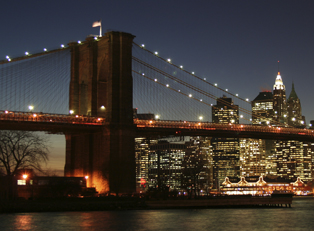There is a deep connection between the 9/11 Memorial and the histories of New York City and the entire national community. The terror attacks on September 11, 2001, represented the largest loss of life from a terrorist act on U.S. soil and the largest loss of life of rescue personnel from any single incident. The experiences shared in that time are still prominent in the memories of those who witnessed any part of the events, and the consequences have played an enormous role in the course of U.S. history. The importance of the 9/11 events can hardly be overstated. The Nation suffered an unforgettable moment of loss which significantly affected the courses of its action in the aftermath.
Visiting the Memorial is more than a sightseeing event in Manhattan. A visit here is to witness parts of a compelling event in the long history of the nation and, on a personal level for thousands of American families, the remarkable sacrifices and heroism of police, rescue, and civil defense workers. It is appropriate that the nation honors these instances of heroism and bravery, for these acts have helped define our ideals of citizenship. Each visitor, by their presence at the site, helps to honor the victims and heroes; outpourings of public support demonstrate that the nation has not forgotten their heroic contributions. The Memorial has drawn visitors from across the country and around the world.
The best times to visit are seasonally based. There are commemorative events on and near the anniversaries of the attacks bringing large crowds. On the other hand, these events may add more importance and emotion for a visitor. The site is an open-air memorial and dry weather can add to comfort while attending the remarkable memorial grounds. The planners have situated the Memorial around the two former foundations of the two World Trade Center Towers. They consist of groves, lawns, and reflecting pools with dramatic waterfalls. The design included copper engravings of the names of each victim on the structure. It is a solemn and elegant place of remembrance and one for thoughtful reflection. A 9/11 Museum adds a bold element to the Memorial area. This glass structure includes interactive technology and many significant artifacts from the original structures.
The 9/11 Museum expands the activities related to the memorial visit to include multimedia and historical documents. Visitors are immersed in a time-phased presentation of the events of the attacks and the dramatic efforts for rescue and assistance. The design emphasizes open space with glass and steel construction that bears a semblance to the original towers. It will house distinctive elements of the scenes of that day and recall the tragedy and bravery that have left an indelible mark in the conscience and memory of the nation.
As a sightseeing trip, the location of the museum and memorial in lower Manhattan places visitors near the hubs of hotels, entertainment, and dining destinations. From the Financial District, you can combine a tour with other historic and iconic landmarks such as the Statue of Liberty, The Guggenheim Museum, the Metropolitan Museum of Art, and the magnificent skyscrapers of Midtown.




